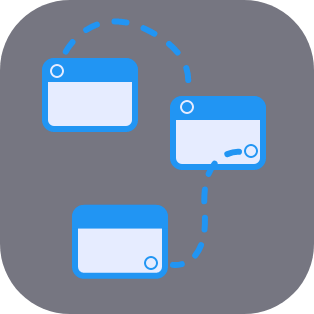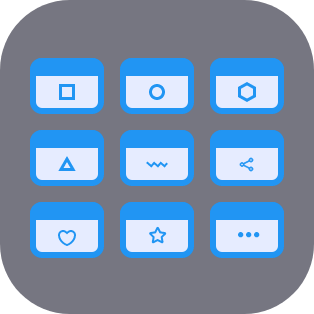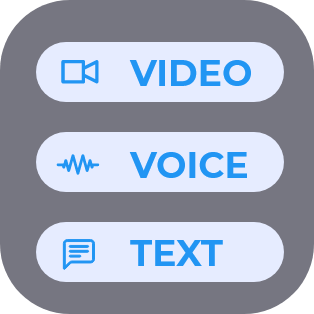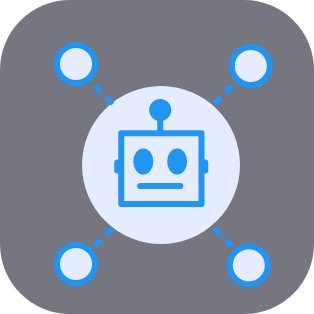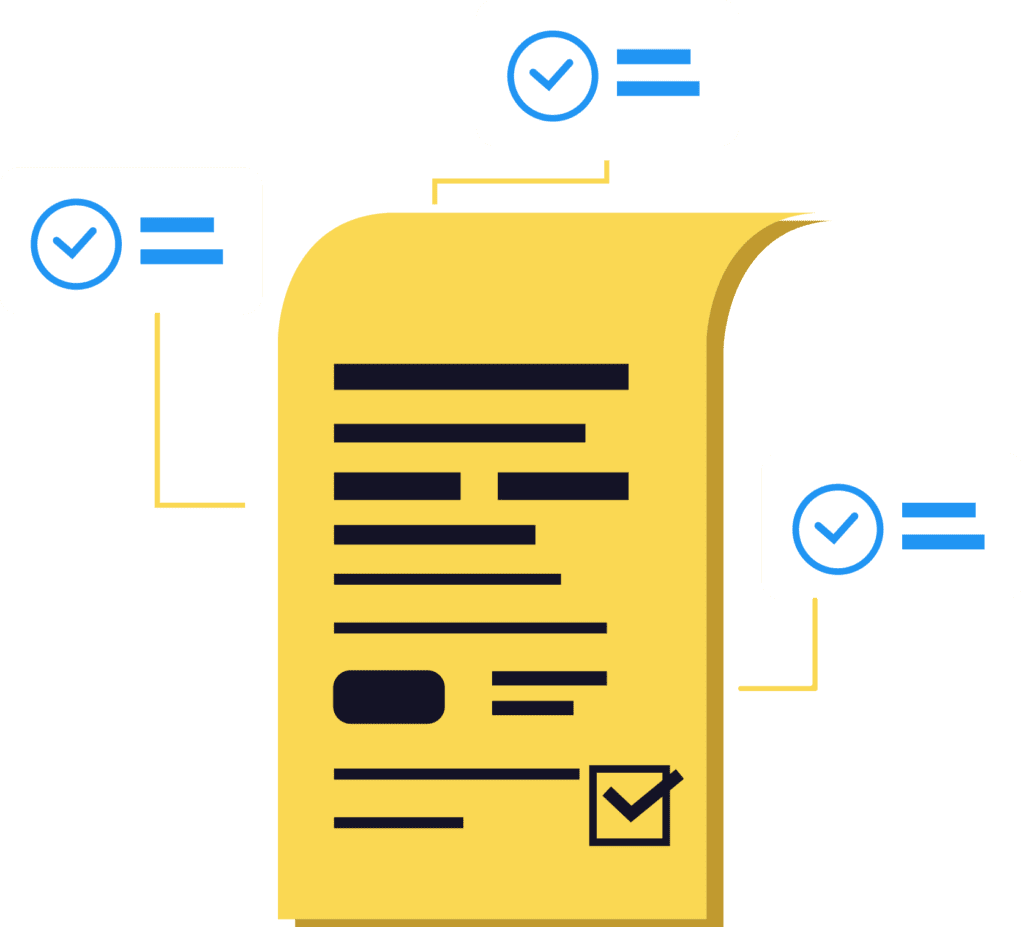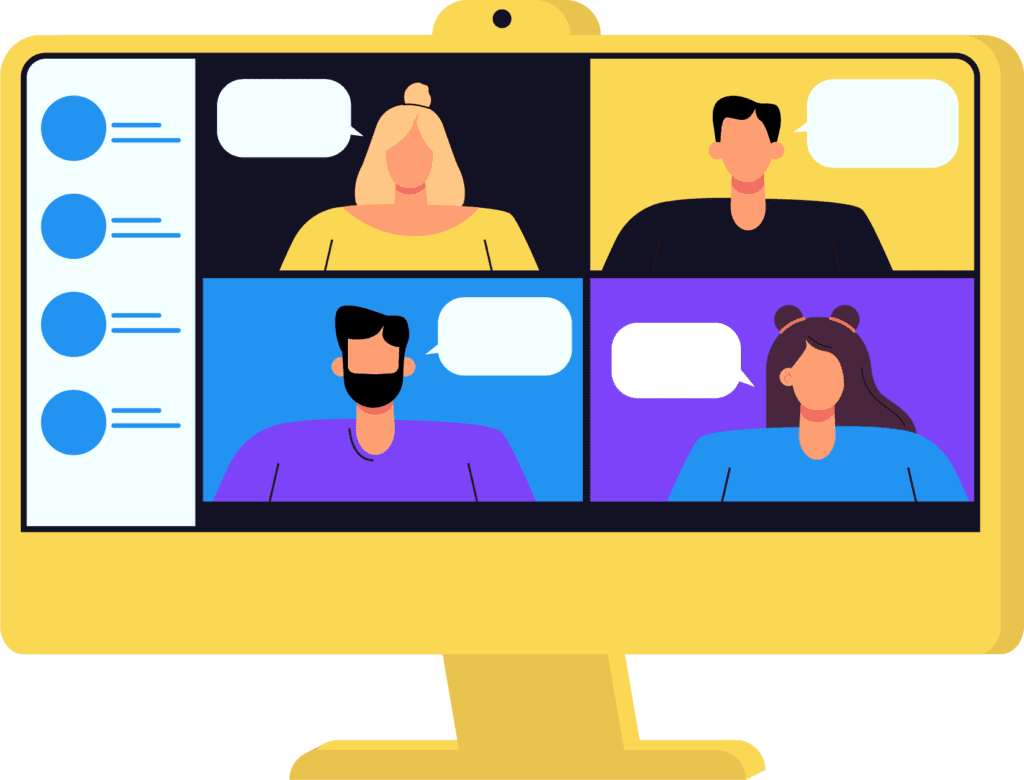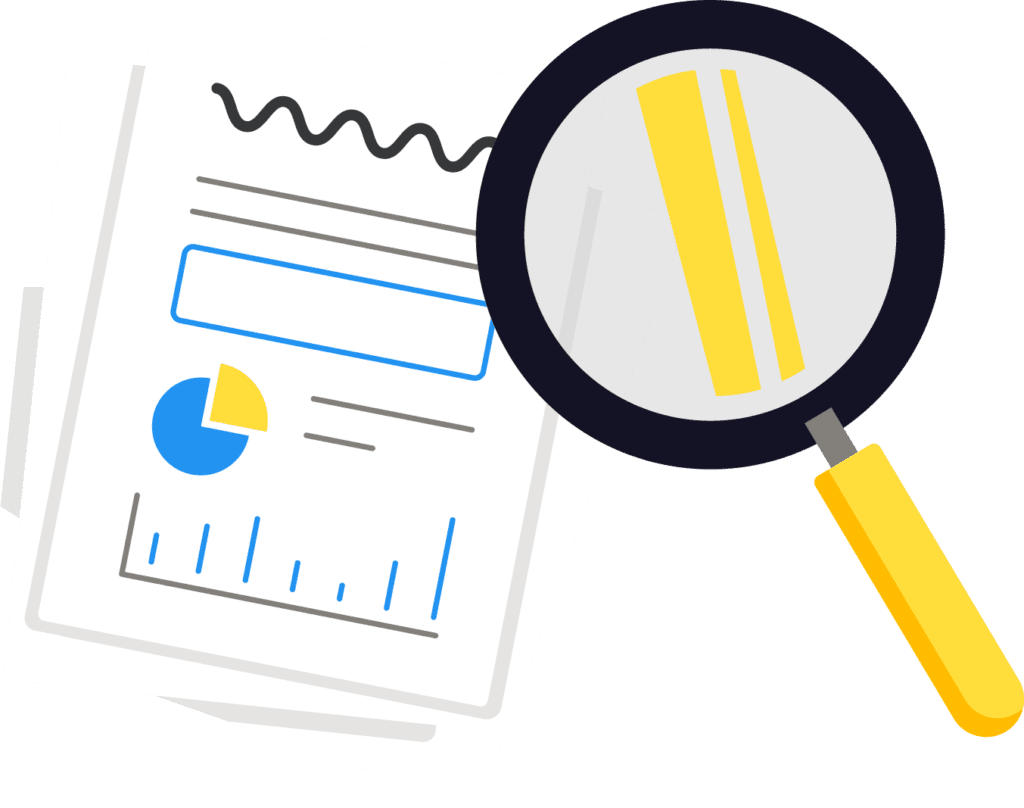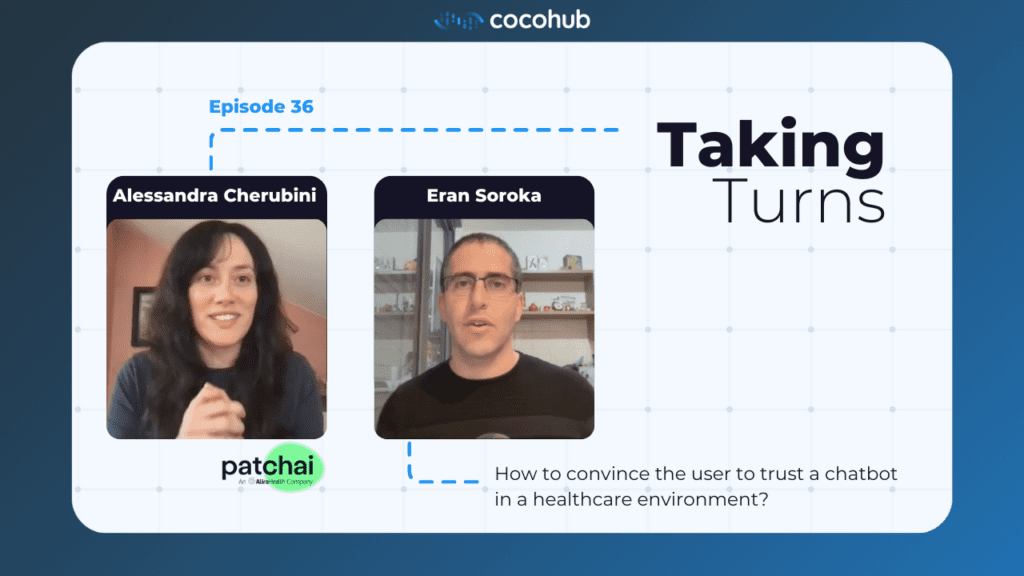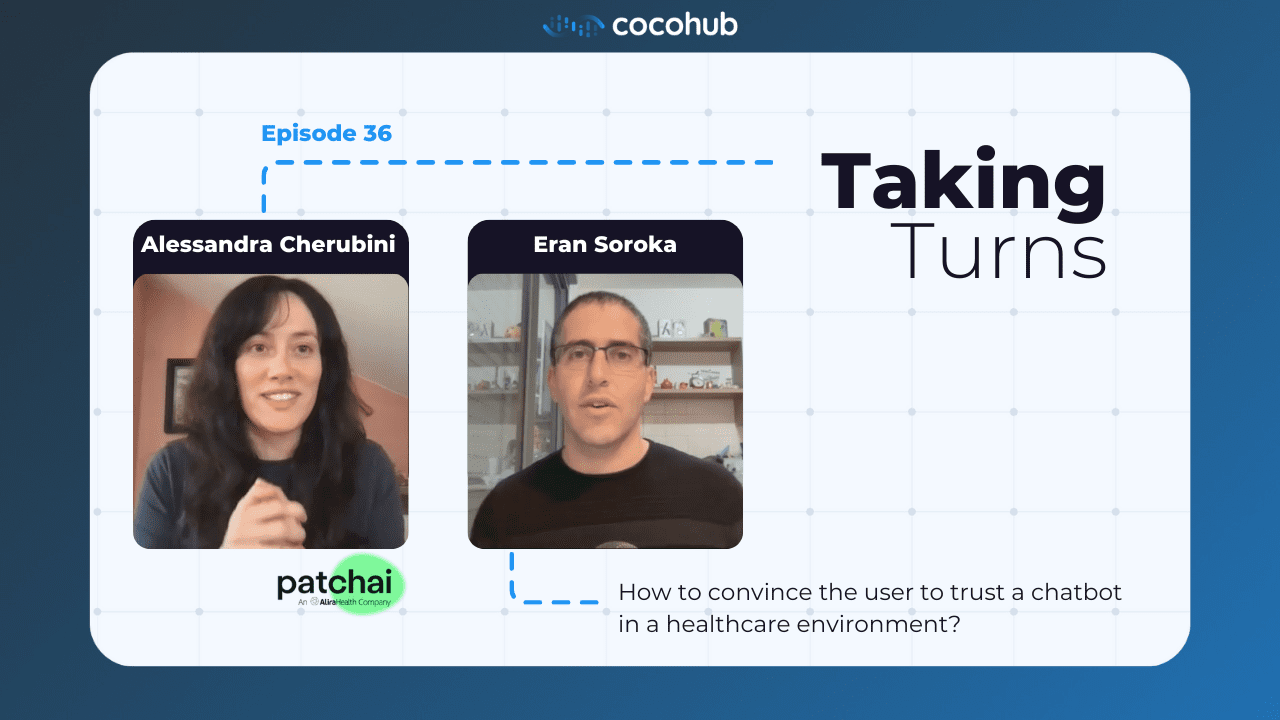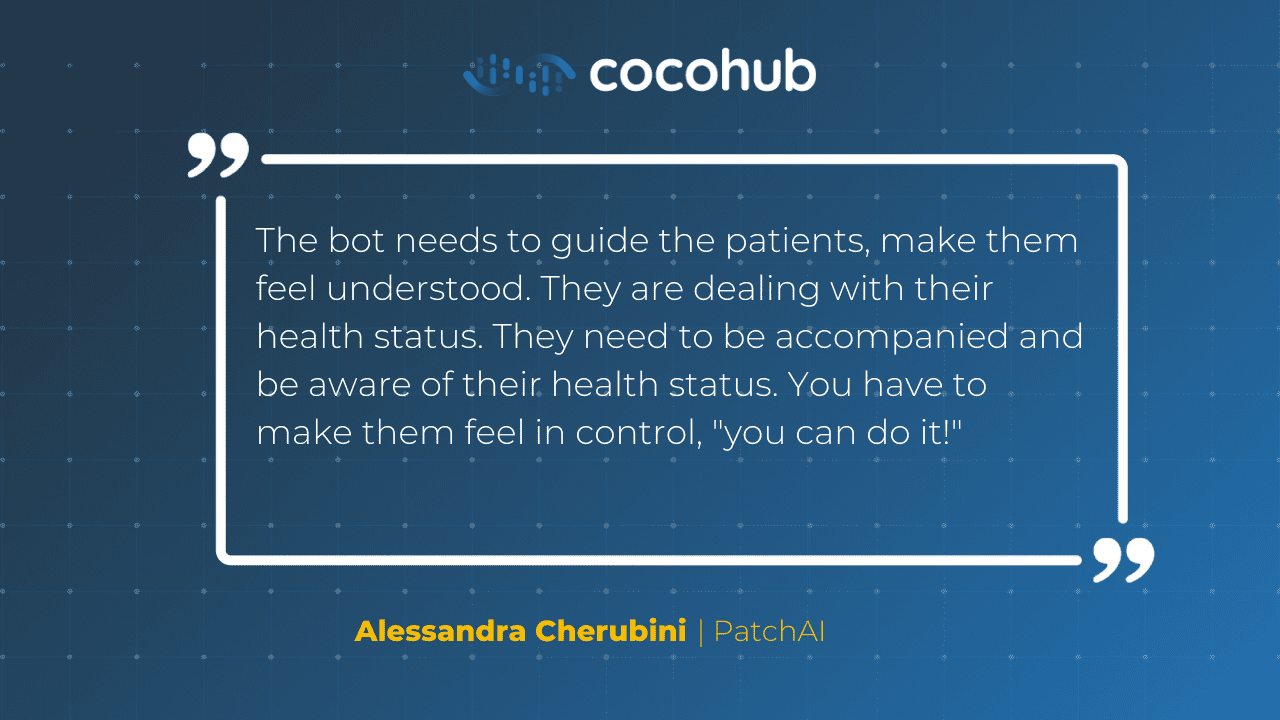In a pandemic-ridden world, lots of people have to stay in quarantine, unable to physically access medical services; on the other hand, medical staff are exhausted and don’t have time to dedicate to each patient. Conversational AI is filling the void, and with the technology advancing at a rapid pace, a good healthcare chatbot or voice bot can create trust between the patients and the healthcare system.
However, you need to be very precise and delicate to make it happen – so we brought over Alessandra Cherubini from Milan, Italy, who works for PatchAi, a healthcare company.
First of all, how did you get into conversation design?
So, I have an educational background in humanities, and I studied specifically translation languages, literature, etc. Later, when I was about to finish my master’s degree, I started to get fascinated by computational linguistics. So I started to dive into concepts like NLP, NLU, and machine learning theories; also, to apply to courses, read papers, and books.
Back in time, conversation design in Italy wasn’t so widespread. However, after some research, I managed to start my career as the NLU trainer for this chatbot in customer service for a bank. One year later, I became a conversation designer in healthcare, working on a healthcare chatbot.
What’s the bot or project that you’re most proud of?
Actually, it’s a hard question. For sure I was deeply satisfied when I saw the first results of my work in my first project in the ban. Basically, this customer support chatbot needed some fixing and improvements because lately, its performance was downgrading. So I started to work on that and just release my adjustments. After some time I saw that both its performance was the conversation were getting better. Also, the users were more satisfied with this chatbot, by providing better feedback, quantitative and qualitative feedback. So that was really a great start for me and pushed my confidence, let’s say.
Ready to build your bot on cocohub? Start here!
How to create your chatbot’s personality?
How to use and create intents in your bot?
What’s the biggest advantage of a healthcare chatbot?
Basically, chatbots help to automate certain tasks or improve some processes. Also, a healthcare chatbot can be used for different purposes. For example, you can use a healthcare chatbot for collecting data, checking your symptoms, providing medical information or mental support. However, it’s also helping manage administration issues such as scheduling appointments or dealing with invoice requests.
Honestly, I think that we are moving from the mere concept of automation in healthcare to exploring the true capabilities of conversational interfaces. Because in my case, for example, I work on this conversational interface on a product for clinical trials. Here, it’s essential that your bot shows empathy and motivates or praises the patients involved in care.
Generally, the bot needs to guide the patient, make them feel understood because they are dealing with their health status. They need to be accompanied and develop an awareness of their health status. You have to make them feel in control, “you can do it!”.
Actually, I think that those horrible pandemic days emphasized the need for conversational tools in the healthcare industry.
Yeah, I agree. Indeed, during an emergency, all the system has been overwhelmed, as we know, but users still need some prompt responses. Indeed, I think the superpower of conversational tools is that they can give you the perception of immediate feedback. So from one side, this turn-taking during the interaction is something that naturally makes you feel heard and somehow understood; in the pandemic, I think that the need for empathy has become primary. On the other side, tools like healthcare chatbots have been very useful in automating triages for COVID or self-assessment questionnaires. Also, they were essential to collect data in a structured way and in little time, for example.
Previously on Taking Turns | Watch the whole playlist
Esha Metiari talks about the art of building a great bot persona
Phil D. Hall takes us back to a tour about the history of chatbots
Hale Tuba Yilmaz on the best cases for chatbots in education
Talking about it – how do you make the bot empathetic and gentle enough to convince users to share the medical information? Although we’re getting used to doing it in front of human doctors, with a healthcare chatbot it’s quite different.
To be persuasive in asking health-related questions, the healthcare chatbot should be clear about the goals and the reason for which you are collecting these data. For example, you have to state who will process this data, why you are collecting it and what’s the outcome. This is the base for being empathetic, I’d say. Because it’s not only a matter of showing that ‘I feel what you are feeling’ – sometimes this can be perceived as rude. So it’s better to just be clear and go step by step.
For instance, if your healthcare chatbot is on a mobile application, like in my case, all experience must be consistent with this kind of clarity towards the patient. Then, the patient must trust the tool by which they are communicating data. So it’s also important to make the patient know how this tool works. That’s another way to be empathetic; if the patient understands how the tool works, it’s safer for them to communicate data. So if they perceive that it’s a safe environment, it’s better because we are talking about delicate, sensitive data.
You mentioned the data is sensitive, so here’s a strange story. During January, people texting with the Israel Minister of Health’s Covid healthcare chatbot had an awkward interaction. After it asked them “how do you feel?”, some people clicked on, “not good”. Then the bot said, “Great, I hope it stays that way”. Do you have some awkward stories of your own?
Although it’s not strictly related to chatbots, a recent episode came to my mind. When our development team was building this in-house testing prototype tool for me to work on, they showcased it in front of their company. Then, I was surprised because the bot icon was me, my slack picture. So it was funny because they sampled a conversation where I said something like, how are you all you really need to go on holiday? And I would suggest also having some mojitos or something like that. So I just realized – even if I work with the bot every day, I never imagined that one day I will turn into a chatbot myself. It was kind of funny.
So, besides the healthcare chatbot you mentioned, what’s the most important thing for a chatbot?
Actually, this can be applied across fields: dealing with user expectations. It doesn’t mean that the chatbot should be able to do everything, but it’s setting the boundaries and dealing with them. After all, users can easily get disappointed when chatbots don’t satisfy their needs or the conversation is going in an unexpected way the users don’t expect.
So to me, there are two important best practices for a good conversation design and conversational experience, for sure. First, make your chatbot understand the most of what it should understand, it should be able to do. Second, in case the users ask for something that is out of the chatbot knowledge, just be prepared. There, create repairing flows that bring added value to the user anyway, even if they cannot satisfy the user’s needs. However, it’s s not just a “Sorry, I’m still learning”, but maybe something more valuable.
So the only way to do it is to create a strong basis before starting developing your healthcare chatbot. For example, do some user research, understand the journey of the user, the context in which they act. From there you can retrieve the intents on which build some of your conversations. After the chatbot’s launch, monitor it and fine-tune the knowledge just to understand if you forget about some shades that you didn’t think about before. So this is the only way to continuously deal with users’ expectations and be okay with it.
You talked in terms of “before, it wasn’t widespread in Italy”. If somebody wants to get into conversation design, what tips or advice would you give this person?
Generally, it isn’t that widespread now. However, I see that things are getting better because a conversation design community is growing also in Italy. I’m very happy to say that. To all the people out there interested in conversation designing – put all your efforts into this path you believe in. Although this is a general statement, it’s very applicable to conversation design; It’s an emerging field, technology is running fast and we need some conversation designers to join the loop.
Although there’s no fixed path to becoming a conversation designer, there are plenty of useful tools. For example, apply to courses, join webinars, workshops, read books, watch videos, create a network on social media. Everything can enrich your knowledge and can create opportunities for sure. So I know that it’s an emerging field, but be proactive and take failures as a way to improve. Also, focus on some UX and copywriting skills. That is good.
Yeah. Taking failures as a way to improve is right, both for the chatbots and for the conversation designers.
Exactly! We’re kind of turning into chatbots ourselves in a way.
Let’s talk about PatchAI, your company, what the company is doing? What are you doing there?
So, PatchAI, which has been acquired recently by Alira Health, is a company operating in the clinical research field. Currently, I’m focused on the product for clinical trials, and trials are essential for science progression. However, this journey can be hard for the patient. Because they’re required to collect data, often daily and according to strict protocols.
So the solution that has been developed by Patch AI aims to help these patients deal with their trial commitments. As a part of the product team, I’m focused on defining patient-centric roles for the conversational interface. So I started by researching the patient needs and outlined appropriate bot personas and validated them. Also, the University of Padova helped us here. Here, I have been iterating on dialogs to ensure the best conversational experience possible for those who join the trials.
Give us one forecast for the future of conversational AI as you see it.
Here, I’ll keep my feet on the ground with this question. First of all, we need to consolidate what has been growing fast in recent years. Because technology has run fast. However, there’s room for improvement in the overall experience between users and bots still, both applied to text & voice. So we need a more personalized experience, more natural and humanlike conversations. In other words, chatbots really need to make the users feel understood.
With a healthcare chatbot, this kind of craft experience is very useful and important. After all, we have many examples of conversational AI applied to medical devices for mental support or physical health. In that regard, there’s one project I came across recently, I really liked it. One company developed a robot that helps cognitive, social, and linguistic impairment of children on the spectrum. And this is a very specific use case for conversational AI and not only also, of course, robotics. Generally, curating and personalized, the whole conversational experience can enhance the technical capabilities. So it’s like a synergy. Instead of focusing only on the technical part – develop the whole conversational experience. As a result, it can have positive impacts.

